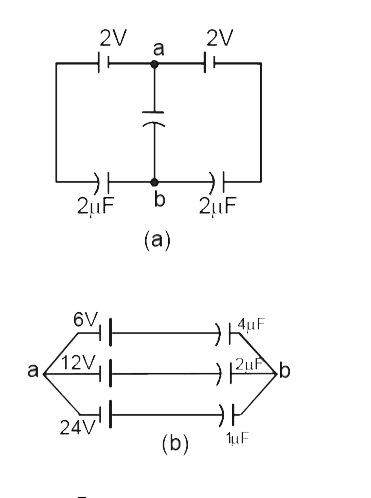An electric field of 20N/C exists along the X-axis in space. Calculate the potential difference VB - VA where the points A and B are given by,
A = (0,0), B = (4m, 2m)Solution in Bengali
Step by step video & image solution for An electric field of 20N/C exists along the X-axis in space. Calculate the potential difference VB - VA where the points A and B are given by, A = (0,0), B = (4m, 2m) by Physics experts to help you in doubts & scoring excellent marks in Class 12 exams.
Updated on:21/07/2023Topper's Solved these Questions
- ELECTROSTATIC POTENTIAL AND CAPACITANCEBOOK - PATHFINDERCHAPTER - ELECTROSTATIC POTENTIAL AND CAPACITANCEEXERCISE - QUESTION BANK
50 Videos
- MAGNETIC EFFECT OF CURRENT AND ELECTROMAGNETISM-I,II AND IIIBOOK - PATHFINDERCHAPTER - MAGNETIC EFFECT OF CURRENT AND ELECTROMAGNETISM-I,II AND IIIEXERCISE - QUESTION BANK
213 Videos
Similar Questions
Can two equipotential surfaces intersect?
View SolutionA wire placed along north south direction carries a current of 10A from south to north find the magnetic field due to a 1 cm piece of wire at a point 200cm north east from the piece
View SolutionLet A and B be two points on a parabola y^(2)=x with vertex V such that VA is perpendicular to VB and theta is the angle between the chord VA and the axis of the parabola.The value of (|VA|)/(|VB|) is
View SolutionAssume that an electric field →E=30x2ˆj exists in space. Then the potential difference VA−VO, where VO is the potential at the origin and VA the potential at x=2m is:
View SolutionA uniform electric field exists in x−y plane. The potential of points A(−2m,2m),B(−2m,2m) and C(2m,4m) are 4V,16V and 12V respectively. The electric field is
View Solution
There exist electric field in space such that potential gradient along y-axis and z-axis is zero. Figure shows variation of potential with x coordinate. It implies that there should be
View SolutionA uniform electric field of 30NC−1 exists along the X-axis calculate the potential difference VB−VA between the points A (4m,2m) and B(10m,5m).
View SolutionA uniform electric field is along x-axis. The potential difference V_(A)-V_(B)=10 V is between two points A (2m, 3m) and (4m, 8m). Find the electric field intensity.
View SolutionAn electric field of 10 N/C exists along the x-axis in space. Calculate the potential difference VB−VA where the points A and B are given by -
(a) A = (0, 0), B = (8m, 3m), (b) A = (8m, 3m) , B = (12m, 6m)
(c) A = (0, 0) , B = (12m, 6m)
View SolutionAn electric field of 20 N/C exists along the negative x-axis in space. Calculate the potential difference V_(B)-V_(A) , where the points A and B are given by : (a) A= (0, 0), B=(0, 4m) (b) A=(2m, 1m), B=(4m, 3m)
View SolutionAn electric field →E=Bxˆi exists in space, where B=20V/m2. Taking the potential at (2m, 4m) to be zero, find the potential at the origin.
View SolutionFind the potential difference Va – Vb between the points a and b shows in each parts of the figure.

View SolutionThe potential difference (VA – VB) between the points A and B in the given figure is

View Solutionयदि किसी बिन्दु पर विद्युत् विभव V है तो X-अक्ष के अनुदिश उस बिन्दु पर विद्युत क्षेत्र होगा :
View SolutionIn a region where the electric field having magnitude 10^(4)NC^(-1) , parallel to Y-axis exists. Calculate the potential difference between two points in that region, A (0, 2m) and B (0, 9m).
View SolutionAssume that an electric field →E=30x2ˆi exists in space. Then the potential difference VA−VO, where VO is the potential at the origin and VA the potential at x=2m is:
View Solution
